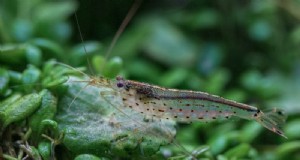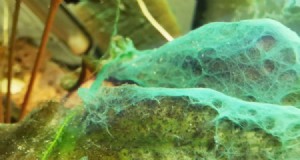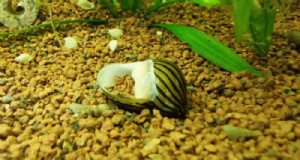淡水水族館のカタツムリは、趣味でかなり悪いラップをすることがある一般的な水族館の生き物です.これらの反転を維持することには長所と短所がありますが、通常、欠点よりもはるかに多くの利点があります.
この記事では、水槽に適した種類の水槽のカタツムリを選ぶお手伝いをし、それらを健康に保つために知っておくべきことをお教えします.望ましくないカタツムリを扱っている場合は、それらを制御するのに役立ついくつかの素晴らしいヒントもここで見つけることができます.
それでは始めましょう!
良い対。悪い水族館のカタツムリ
水族館の良いカタツムリと悪いカタツムリの違いは何ですか?さて、水族館の趣味のほとんどのカタツムリには、良い面と悪い面があります。多くのアクアリストは、カタツムリを美しく、水族館で役立つ魅力的なペットと考えています。他の人は、特に彼らが偶然にタンクに侵入し、乗っ取っているように見えるとき、それらをまったく好きではありません!
これらのタンククリーナーを水槽に保管することの長所と短所をいくつか見てみましょう.
長所
1. カタツムリは、タンク内の残りの魚の餌や廃棄物をきれいにする優れた仕事をします.彼らは清掃隊の隊長です!
2. カタツムリは藻類を食べます。淡水カタツムリは、タンクのガラス、植物、装飾品、床材を清潔で美しく保つのに役立ちます。
3. いくつかのカタツムリは基質に穴を開けます。基質を掘ると、閉じ込められたガスが放出され、植物が必要とする場所に栄養素が運ばれます.カタツムリは、タンクの見栄えを良くするために、下地の表層をきれいにすることもできます。
短所
1. カタツムリが制御不能に繁殖すると、実際に水槽の生物負荷が増加し、水槽の在庫が過剰になり、バランスが崩れる可能性があります。
2. かなりまれですが、生きている植物を食べる淡水カタツムリもいます。
3. カタツムリの過密は見栄えが悪く、ガラスにくっついてカタツムリの卵を残すことがあります
短所を管理している限り、ほぼすべての水族館のカタツムリが「良い」カタツムリになることができます.そうは言っても、特定の種のカタツムリは、他の種よりもはるかに優れた選択をします.
水族館のカタツムリの種類
現在、ホビーで利用できるカタツムリにはかなりの種類があるため、タンクに適した種を選択するのは少し難しい場合があります.
この記事では、淡水水族館のカタツムリの最も人気のある種類を紹介し、それらに関する最も重要な情報を提供します:
この情報を使用して、水槽に最適なカタツムリの種類を決定できます。
アクアリウム カタツムリのベスト 7 種
水族館の取引で利用できるカタツムリにはいくつかの種がありますが、これらは特に水槽に植えるのに最適な種です.私はこれらの7種類のカタツムリがほとんどの水族館にとって最良の選択肢であると考えており、コミュニティタンクの種としても優れています.以下は、YouTube チャンネルの動画です .以下でさらに詳しく説明します。私たちのコンテンツが気に入ったら、購読してください!
すぐに飛び込んで、動きの遅い水生の友達に会いましょう!
1.角のあるネライト
最高の藻類カタツムリ ツノネリテ カタツムリ
Horned Nerite Snails は、植えられたタンクの優れた藻類食性です。
クリックしてベストプライスで Amazon で購入
- 学名:クリトン コロナ
- サイズ:1 インチ
- 原産地:東南アジア
- 気温:72~82°F
- pH:7.0-8.2
- タンクサイズ:5 ガロン以上
角のあるネライト カタツムリは、さまざまな色や模様の魅力的な水族館のカタツムリです。甲羅の突起 (角) で簡単に識別できます。
甲羅の色はさまざまですが、クールな黒と黄色の縞模様のものが多いです。これらのカタツムリは藻類を食べます 淡水水族館の優れたスカベンジャーです。
水族館で人気のある他のネリティダエ科のカタツムリと同様に、これらの動物は淡水に生息しますが、汽水が必要です 繁殖します。これらの穏やかなカタツムリは、水景に最適です 生きた植物を食べないからです。
2.ゼブラ ネライト
ゼブラ ネライト
Nerite カタツムリは、購入できる藻類を食べる最高のカタツムリの 1 つです。植物は安全で、淡水では繁殖しません!
クリックしてベストプライスで Amazon で購入
- 学名:Neritina natalensis
- サイズ:1 インチ
- 原産地:南アフリカ、モザンビーク、タンザニア、ケニア、ソマリア
- 気温:65~85°F
- pH:6.5-8.5
- タンクのサイズ:5 ガロン以上
ゼブラ ネライト カタツムリは、植えられた水槽に最適な水生カタツムリの 1 つです。これらの動物は見た目が素晴らしく、その美しい縞模様の甲羅から名前が付けられています。
素晴らしいのは外見だけではありませんが、驚くべき藻類食でもあります。 !
ネライトカタツムリ 淡水では繁殖できず、繁殖は汽水に頼る。このため、この種が淡水水槽の過密状態になることを心配する必要はありません。
3.タイガー・ネライト
タイガー ネライト カタツムリ
これらのネライト カタツムリは藻類を食べ、植物に安全で、水槽内で繁殖しません!
クリックしてベストプライスで Amazon で購入
- 学名:Vittina semiconica
- サイズ:1.5 インチ
- 原産地:インドネシア
- 気温:65~85°F
- pH:6.5-8.5
- タンクのサイズ:5 ガロン以上
シマウマのネライト、トラのネライトのように 生きている植物やタンク内で繁殖することはありません。これらのカタツムリは、非常にクールな黄金色のオレンジ色の甲羅に興味深い黒い模様が並んでいます。
卵を産むこともありますが、淡水タンクで孵化することはありません。ネライト カタツムリは優れた藻類食性であり、水槽をきれいに保つ素晴らしい仕事をしています。
4.マレーシアトランペットカタツムリ
- 学名:Melanoides tuberculata
- サイズ:1 インチ
- 原産地:東南アジア
- 気温:72~86°F
- pH:6.5-7.5
- タンクサイズ:3ガロン以上
マレーシアのトランペット カタツムリは、多くの魚飼育者が害虫のカタツムリと考えている種です。ただし、その利点のいくつかを見ると、これらの這う生き物には他にもあることが明らかです!
彼らはあなたのタンクの底で基質を管理するのに最適な穴を掘るカタツムリです.穴を掘ることで、有毒ガスの蓄積を防ぎ、栄養素を土壌に送り込み、実際に植物に利益をもたらします。
ただし、これらの動物は万人向けではありません。マレーシア産のトランペット カタツムリは繁殖力が強く、非常に丈夫で、取り除くのが非常に難しい場合があるため、水槽に導入する前に慎重に検討してください。
5.ミステリーカタツムリ
- 学名:Pomacea bridgesii
- サイズ:2 インチ
- 原産地:ブラジル、ボリビア、パラグアイ、ペルー
- 気温:68~82°F
- pH:7.6-8.4
- タンクのサイズ:5 ガロン以上
ミステリーカタツムリは、水槽の残り物を食べてくれる素晴らしいクリーナーです。彼らは大きなカタツムリですが、とてもおとなしく、エビの水槽でうまく機能します .ミステリー カタツムリは、ゴールド インカ カタツムリとしても知られています。
ミステリーカタツムリは水族館で飼育できますが、他のタイプのカタツムリとは異なり、卵は水の外で産む必要があります。この要件は、繁殖には雄と雌が必要であるという事実と相まって、制御が容易であり、可能にしない限り繁殖しないことを意味します.
6.ウサギのカタツムリ
ウサギのカタツムリ
ウサギに似た頭を持つカタツムリ。基板を整頓して清潔に保つのに最適です。サイズは最大 4 インチまで大きくなります
クリックしてベストプライスで Amazon で購入
- 学名:チロメラニア 種
- サイズ:2~4 インチ
- 原産地:インドネシア
- 気温:76~84°F
- pH:7.2-8
- タンクサイズ:30ガロン以上
ウサギのカタツムリ ジャンボマレーシアトランペットカタツムリのように見えます。この種の頭はウサギの頭に似ており、それが彼らの名前の由来です。
利用可能なウサギのカタツムリにはいくつかの種があります。これらの大きなカタツムリにはいくつかのクールな色のモーフがあり、トランペット カタツムリのように増殖しません。通常は問題にはなりませんが、ウサギのカタツムリはジャワシダなどの観賞用植物を食べていることが報告されています。 .
これらのカタツムリは、タンクを掃除するのに最適であり、穴を掘ることによって基質を健康に保ちます.かなり大きくなるので、これらのカタツムリは 30 ガロン以上の大きな水槽に最適です。
7.アイボリーカタツムリ
- 学名:Pomacea bridgesii
- サイズ:2 インチ
- 原産地:ブラジル、ボリビア、パラグアイ、ペルー
- 気温:68~82°F
- pH:7.6-8.4
- タンクのサイズ:5 ガロン以上
ミステリー カタツムリが好きで、植えた水槽にもう少しエキゾチックなものが必要な場合は、アイボリー カタツムリが最適なオプションかもしれません。これらの見栄えの良いカタツムリは、通常のミステリー カタツムリと同じ種ですが、純粋なクリーム色の白い殻と、ピンクとオレンジのマーキングが付いた淡い白い体を持つように飼育されています。
Ivory Snail は、通常の Mystery Snail と同じようにタンクに大きなメリットをもたらします。これらのアクティブなカタツムリは、藻類や食べ残しの魚の餌を探して水槽を探し、水槽の仲間とは完全に平和です.
避けるべき 4 つの水族館のカタツムリ
このリストの種は、アクアリストが取り除こうとする不要なカタツムリである傾向があります.彼らには確かにポジティブな面があるので、ここでは彼らをただの悪役とは呼びません.
代わりに、それらをタンクに追加することについて非常に慎重になり、上記の他のカタツムリのいくつかを試してみることをお勧めします.これらのカタツムリの動作を見たい場合は、下のビデオをご覧ください。 YouTube チャンネルに登録してください このようなコンテンツが好きなら。
1.膀胱カタツムリ
- 学名:Physa acuta
- サイズ:1/2 インチ
- 起源:不明
- 気温:64~84°F
- pH:7~8
- タンクサイズ:3ガロン以上
膀胱カタツムリ (ビデオ ソース ) は、多くのアクアリストが水槽に飼っている淡水カタツムリの種です。ただし、これらのカタツムリは通常、選択して水槽に追加されることはありません!
これらの特徴的な外見のカタツムリは繁殖力が高く、雌雄同体であるため、1 匹でコロニーを形成できます。ブラダー カタツムリは穴を掘らず、表面から空気を吸いますが、ほとんどの時間を水槽内の表面でクルージングしています。
藻類、廃棄物、食べ残しなどを食べますが、植物に害を与えることはありません。ただし、損傷した植物や死んだ植物を食べます。
2.ラムズホーン カタツムリ
- 学名:Planorbarius duryi
- サイズ:1 インチ
- 原産地:アメリカ
- 気温:60~80°F
- pH:7.0-7.5
- タンクのサイズ:5 ガロン以上
Ramshorn のカタツムリは、新しい植物で誤って水族館に侵入することがよくあります。それらは、水族館の取引で最も一般的な害虫の 1 つです。
ラムソーン カタツムリはとてもおとなしいですが、自由に繁殖します。しかし、ラムズホーン カタツムリは淡水の水槽では働き者で、色とりどりのらせん状の見事な殻を持っています。
彼らは食べ物にうるさくなく、食べ残しの魚の餌を喜んで掃除して食べます。藻類も食べますが、生きた植物は食べません。 黒ひげ藻を食べることで知られています .
3.暗殺者カタツムリ
- 学名:Clea helena
- サイズ:1~2 インチ
- 原産地:タイ、インドネシア、マレーシア
- 気温:75~80°F
- pH:7~8
- タンクサイズ:29ガロン以上
暗殺者のカタツムリ カタツムリの世界の人食い人種です。これらの肉食性軟体動物は他のカタツムリを食べます。そのため、ほとんどのアクアリストは、有害なカタツムリの個体数を制御するためにそれらを飼っています。
そのためには素晴らしいですが、カタツムリが好きなら、戦車に暗殺者を導入するのは避けてください!まれですが、淡水のエビを食べることもあります 水族館にも。
ただし、通常、彼らは死んだまたは死にかけているエビ、さらには死んだ魚だけを食べます.他にカタツムリがいない場合でも、ミミズなどの高タンパクの沈みやすい餌を与えれば、この種を飼うことができます。
4.アップルカタツムリ
- 学名:Pomecea canaliculata
- サイズ:2~3 インチ
- 原産地:ブラジル、パラグアイ、ウルグアイ、ボリビア、アルゼンチン
- 気温:65~82°F
- pH:7~8
- タンクのサイズ:10 ガロン以上
リンゴのカタツムリ (画像ソース ) have crawled onto this list of snails to avoid for two reasons, they have a habit of eating live plants and they are invasive.
To be fair, apple snails can make an interesting pet in tanks without any live plants, but they should be kept far away from your aquascapes.
Apple snails have escaped captivity and become invasive in many parts of Asia and the Southeast of the USA. They will probably invade other parts of the world if they are allowed to, so please remember to be responsible and never release them (or any other aquarium plant or animal) into the wild.
How To Care For Freshwater Snails
Most types of snails are really easy to care for and will thrive in your fish tank without any extra effort from you. They will do best in a healthy and stable environment though, so here’s some basic information on how to provide them with a great home.
How To Set Up Your Tank For Freshwater Snails
Aquarium and pond snails can be kept in just about any tank size, although the larger species obviously need more space. Assassin snails, for example, will do best in larger tanks with more stable conditions.
Good filtration is very important for keeping healthy aquariums. Although many snail species can survive in lower water quality conditions, running a good quality filter will keep the water looking and smelling pristine. Filtration is also super important if you plan on keeping other animals like shrimp and fish.
To keep the water temperature stable in your aquarium, you will need to install an aquarium heater . Make sure you set your heater to a temperature that your species of snail is comfortable in. A thermometer is also very useful because it allows you to monitor the water temperature in your tank.
Some types of snails, like nerites , for example, will often crawl out of the water and can easily escape your fish tank. Make sure you have a secure lid/hood over your tank to prevent them from escaping and getting lost or hurt.
What To Feed Your Snails
Most aquarium snails will live happily in your aquarium without needing to be fed specifically. Here’s what they eat:
- Uneaten fish food
- Dead plant matter
- Soft algae
- Fish waste
This makes keeping your snails happy and well-fed really easy. If you don’t have enough of those food sources available to your snails, you can also feed them some bottom feeder tablets, or even some blanched green vegetables.
Providing an extra food source is definitely recommended if you keep a lot of algae-eating snails like nerites and they run out of food. If this happens, it is even possible to grow algae for them to eat.
Where To Get Freshwater Snails
Many fishkeeping stores have a few of the more common snails available for sale. For a great variety of cool aquarium snail species from an online fish store , I would suggest checking out Flipaquatics. The team at Flipaquatics takes great care of their stock to ensure your new pets arrive in perfect shape.
How To Avoid Introducing Nuisance Snails To Your Aquarium
Snails often find their way into aquariums, whether we introduce them intentionally or not! It is easy to prevent this from happening though, so let’s start by looking at how they sneak in.
How Can Snails Get Into Your Tank?
The first thing to note is that snails can get into your aquarium as adults, or as eggs. Any time you add something to your aquarium that has been in another aquarium, you run the risk of adding snails.
This includes the tanks at your local fish store or even your friends’ tanks. Adding things to your tank from wild sources like ditches, lakes, or rivers is also a risk.
Snails and their eggs are usually attached to new plants, ornaments, gravel, or basically anything from another tank. Snails are really tough as well, so even if an object has been outside of a tank for some time, the snails can still survive.
Another way that snails can arrive is when you introduce new fish to your tank. Sometimes a little gravel gets scooped up and bagged along with your new fish, and sometimes a snail or two can be part of the deal.
Tips To Keep Snails Out
Adding new plants is one of the most common ways that pest snails are introduced to fish tanks. Before adding a new plant to your aquarium, check it thoroughly and rinse it off, removing any snails or eggs you might see.
Next, prepare a bleach dip consisting of 1 part bleach to about 20 parts water. Dip soft plants in the solution for no more than a minute and firm plants for up to two minutes. Afterward, rinse the plants off carefully with conditioned water before planting them out.
A much easier way to safely add new plants is to buy tissue culture specimens. These are plants that are carefully grown under special lab conditions to ensure that they are pest-free. They are not always easy to find, so check out online retailers like Buceplant for a great range.
マイ ピック ブープ プラント
Buce Plant では、さまざまな種類の水草を販売しています。米国最大級の品揃えで、ここで必要なものが見つかります。また、淡水エビの素晴らしい供給源でもあります!
詳細についてはクリックしてください
How To Get Rid Of Nuisance Snails
Before starting an all-out war with the snails in your tank, remember the great benefits they provide. Often, it’s best to keep them around but keep the numbers down to a reasonable level.
Managing the snail population in your tank can be surprisingly easy if you understand this one simple truth about snails:the more food they have, the more they will breed! So how do you reduce the amount of food available to the snails?
Reducing Snail Food Supply
Well, start by making sure you are not overfeeding your fish. If there’s limited food for the snails, their numbers will stay stable.
It is very important to maintain good water quality in your tank by performing regular water changes and tank maintenance. This is the best way to keep the nutrient levels low in the water.
Another great way to reduce the nutrients in your aquarium is to grow fast-growing aquarium plants that will soak up excess nutrients and turn them into healthy new leaves!
Physical Removal
Here’s a great tip for actively managing the snail numbers in your tank:you can bait them with algae wafers or even a piece of lettuce or some other leafy green.
Set the bait into a small dish on the bottom of the tank, and weigh it down so that the snails can access it. Leave the dish in the tank overnight, and remove it the next morning when it is crawling with snails!
Introduce Assasin Snails
Introducing another species of freshwater aquarium snail to your tank might seem like a terrible way to reduce your pest snail population. Assassin snails are one kind of animal that can really help though because they eat other snails.
Fish That Will Eat Snails
Whether you want to keep your pet snails safe from hungry fish, or are looking for a way to remove unwanted pests from your aquarium, knowing which species of fish eat snails is very useful! The following fish species are notorious snail-eaters that can help remove pest snails from your tank.
- Clown Loach
- Skunk Loach
- Yoyo Loach
- Carnivorous Cichlids
- Freshwater Pufferfish
- Goldfish
Fish That Are Compatible with Snails
For the snail-lovers out there, it can be devastating to see your pets eaten by their tank mates. Fortunately, most peaceful community fish will get along fine with snails, as long as they prefer the same water parameters.
Smaller nano fish are usually a safer bet than larger fish, and shrimp are also great tank mates. Fish have a mind of their own of course, and there are no 100% guarantees, but as long as you avoid the fish listed above, your snails should be safe.
よくある質問
Are snails good for your fish tank?
Snails provide a bunch of great benefits for your tank. Apart from the few species that feed on plants, snails are usually a hardworking member of your clean-up crew.
How big do aquarium snails get?
The maximum size of aquarium snails varies hugely, depending on their species. Bladder snails, for example, only measure about 1/2 an inch across, while mystery snails can reach golf ball size!
Can you have a tank of just snails?
Sure, if you’re interested in keeping snails only, there’s nothing wrong with that. You can add a few live plants and a basic filter and you will have a very interesting invert tank.
How do I know what kind of snail I have?
Most of the common aquarium snails are pretty easy to identify once they have reached full size. The color, markings, and shape of the shell, as well as the color and form of the body, are the best way to identify these creatures.
How long do freshwater aquarium snails live?
The lifespan of aquarium snails varies, depending on their species and how healthy their water parameters are. You can expect most types of aquarium snails to live at least 1 to 3 years.
最終的な考え
Love them or hate them, aquarium snails are something that most aquarists and fishkeepers will come across sooner or later. Some might be pests, but many of them are very cool additions to community tanks and planted aquariums .
Whether you’re looking to add new snails to your tank or get rid of them, I hope this guide helps you out! Please comment below if you have any questions.




